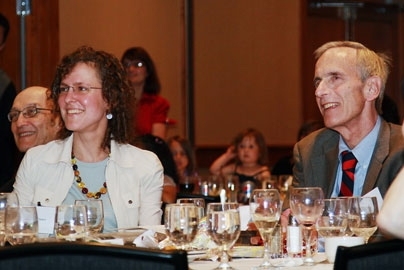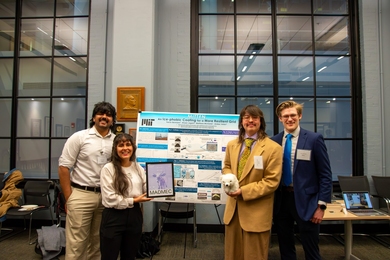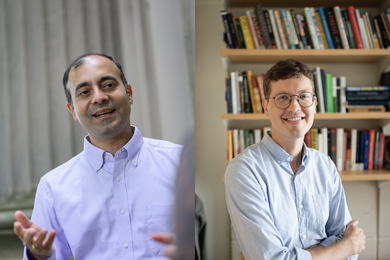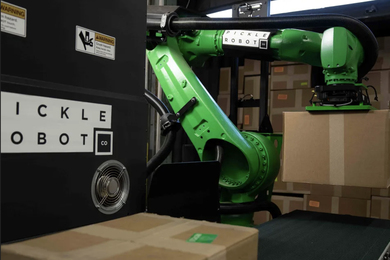More than 50 friends and colleagues of Professor of Physics Michael S. Feld gathered Saturday, June 27, to celebrate his achievements in physics and in biomedical research, his 50 years at MIT, and his 33 years as director of MIT's George R. Harrison Spectroscopy Laboratory.
Former students and post-docs traveled from around the world to Cambridge for the all-day "Feld Fest," which included a program of scientific talks and a banquet. The talks examined the breadth of Feld's research, which has ranged from fundamental physics - superradiance and innovations in laser spectroscopy - to biomedicine and biomedical engineering, new kinds of microscopy, spectroscopic identification of cancer cells, and novel uses of the electric field to study cell behavior.
At the banquet, guests reminisced about Feld's dedicated pursuit of research goals, and about his energetic efforts to foster a strong sense of community at the Spectroscopy Laboratory. Feld's long-time MIT colleague, Daniel Kleppner, the Lester Wolf Professor of Physics Emeritus, praised Feld for daring to change his direction of research toward biomedicine long before it was apparent that this would become such an important field. "It took guts to do this," Kleppner said, noting that Feld's work has helped transform the field.
Dr. John Kramer, a cardiologist now emeritus from the Cleveland Clinic, recalled how he and Feld came to collaborate on exploring clinical possibilities of Feld's biomedical research. The symposium talks had already shown how these possibilities are leading to advances in diagnosis and identification of breast cancers, non-invasive fast imaging of entire cells, detailed real-time imaging of the vascular system in the human retina, characterization of materials to serve as scaffolds on which to grow various types of human tissue, spectroscopic identification of arterial plaque, and the ability to observe visually in real time the transport of organelles along neurons.
Feld's early work in fundamental laser physics also continues to be significant. Professor Marlan Scully, of Texas A&M and Princeton University, showed how new ways of looking at superradiance relate to Feld's work. "Michael is the kind of experimentalist who can do his own theory," he said. Feld's former student, John Thomas, now at Duke University, described how laser physics with cold atoms is turning out to be relevant to predictions from string theory about the quark-gluon plasma and fundamental quantum fluids. Professor Kyungwon An, who traveled from Seoul National University to honor his former mentor, showed how work he began at MIT on the single-atom laser has grown into masterful experimentation on details of atom-cavity interactions.






